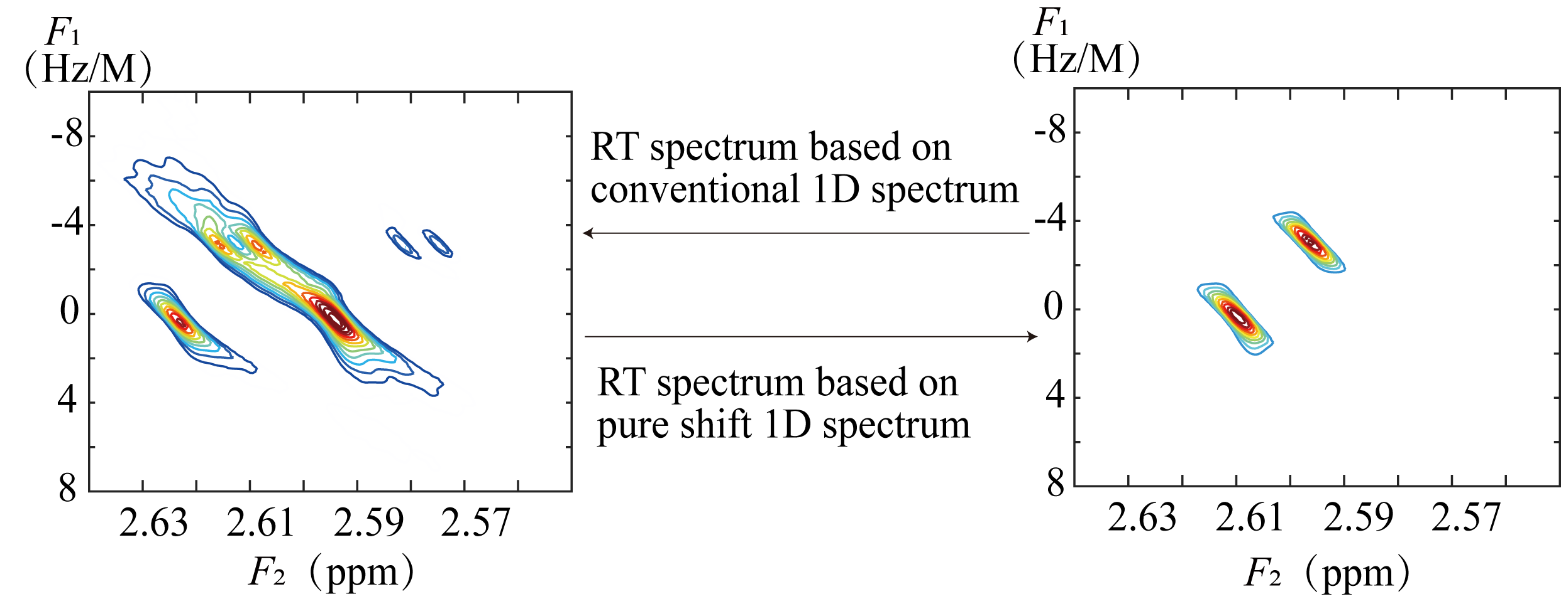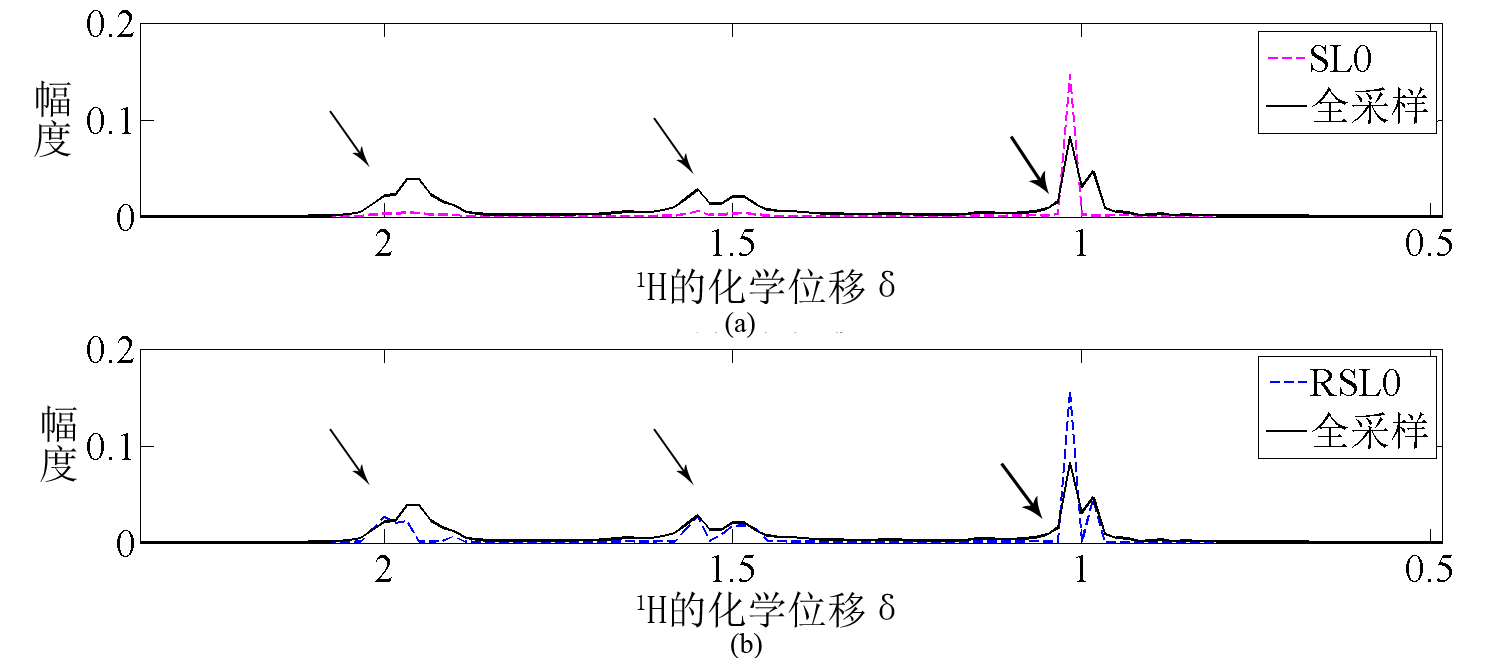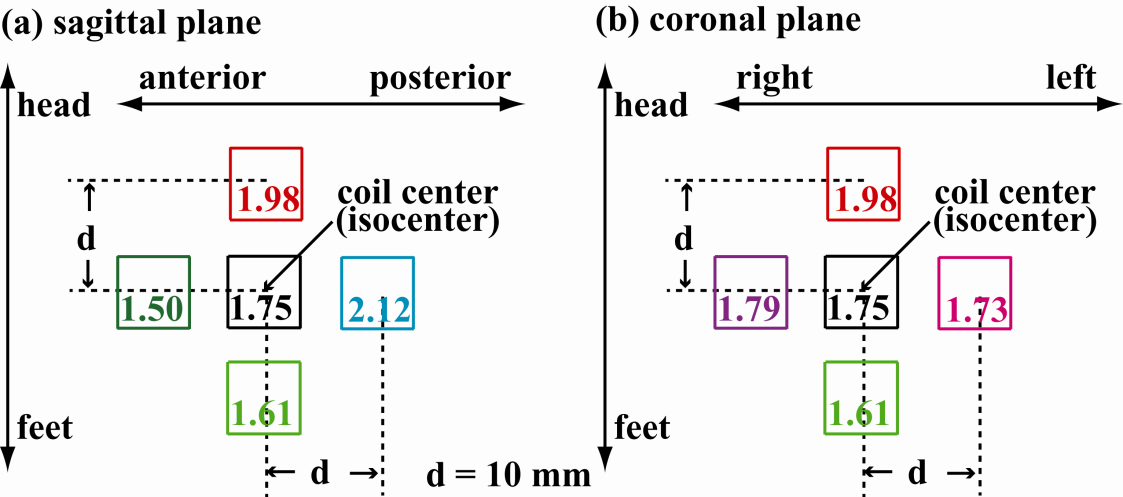Signal and spectral processing plays an important role in improving signal and spectral quality. We have done the following work (but not confine to):
1. High-resolution 2D NMR spectroscopy based on the Radon transform and pure shift technique for studying chemical shifts perturbations

Chemical shift plays an important role in molecular analysis. However, chemical shifts are influenced by temperature, solvent concentration, pressure, etc. Therefore, measuring chemical shifts perturbations caused by these factors is helpful to molecular studies. A new form of two-dimensional spectroscopy (projection spectroscopy) has been introduced whose indirect dimension is derived by implementing the Radon transform on a series of conventional 1D proton spectra and indicates such perturbations. However, signal overlap may exist in the conventional 1D spectra and hence in the resulting projection spectra, hampering clear multiplet analysis and accurate extraction of perturbations. Here the pure shift decoupling technique is employed to obtain a cleaner and clearer projection spectrum with higher spectral resolution. The combination of pure shift technique and the Radon transform is helpful to accurately extract chemical shift perturbations.
2. Sparse Reconstruction Algorithm Based on Approximate l0 Norm Minimization

1D slices: (a) SL0 and full sampled spectrum, (b) RSL0 and full sampled spectrum
The problem of long time sampling often prohibits many applications of the multidimensional NMR spectroscopy. A common approach is to replace the sampling on Nyquist grid by random non-uniform sampling (NUS). However, NUS is associated with inherent loss of spectrum quality. A suitable CS reconstruction algorithm can be employed to obtain high-quality spectra from a few NUS data. Re-weighted smoothed l0 norm Minimization (RSL0) has robustness to noise and can reconstruct high-quality spectra with fewer sampling data.
3. SNR Enhancement with Phased Array Coils on a 3T Whole-Body Scanner

Ratios of SNRs of the 32-channel over CP head coils, with voxel centers at different positions as indicated.
For experiments with the phased array coils, MRS signal is received by each element of phased array coils, then combined to create a composite MR spectrum. Therefore, an effective combination algorithm is crucial. The key step in combination is to determine the weighting factor. A multichannel nonparametric singular value decomposition (SVD) method is adapted to use all of available fid data points to estimate the weighting factor.

